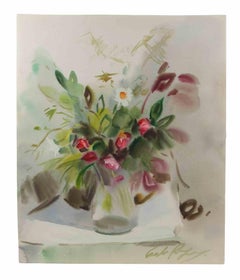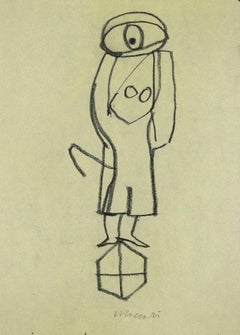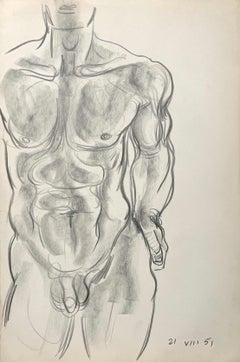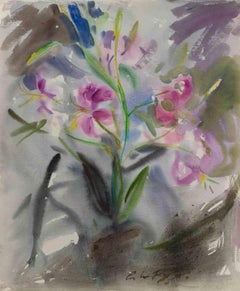20th Century Figurative Drawings and Watercolors
20th Century Figurative Drawings and Watercolors
Ink, Pen
Contemporary 20th Century Figurative Drawings and Watercolors
Watercolor
Modern 20th Century Figurative Drawings and Watercolors
Pencil
American Modern 20th Century Figurative Drawings and Watercolors
Graphite, Paper
Contemporary 20th Century Figurative Drawings and Watercolors
Watercolor
Contemporary 20th Century Figurative Drawings and Watercolors
Watercolor
Post-Impressionist 20th Century Figurative Drawings and Watercolors
Ballpoint Pen, Charcoal
American Modern 20th Century Figurative Drawings and Watercolors
Watercolor, Paper
Contemporary 20th Century Figurative Drawings and Watercolors
Watercolor
Modern 20th Century Figurative Drawings and Watercolors
Paper, Watercolor, Pencil
Pop Art 20th Century Figurative Drawings and Watercolors
Paper, Ink, Graphite
Modern 20th Century Figurative Drawings and Watercolors
Lithograph
Impressionist 20th Century Figurative Drawings and Watercolors
Pencil
Pop Art 20th Century Figurative Drawings and Watercolors
Ink, Watercolor
American Modern 20th Century Figurative Drawings and Watercolors
Watercolor
Contemporary 20th Century Figurative Drawings and Watercolors
Watercolor
Art Nouveau 20th Century Figurative Drawings and Watercolors
Charcoal, Chalk
Post-Impressionist 20th Century Figurative Drawings and Watercolors
Charcoal, Pencil
Impressionist 20th Century Figurative Drawings and Watercolors
Ink
Contemporary 20th Century Figurative Drawings and Watercolors
Paper, Oil Pastel
Modern 20th Century Figurative Drawings and Watercolors
Pencil
Contemporary 20th Century Figurative Drawings and Watercolors
Paper, Ink
20th Century Figurative Drawings and Watercolors
Pencil
Expressionist 20th Century Figurative Drawings and Watercolors
Paper, Charcoal
Post-Impressionist 20th Century Figurative Drawings and Watercolors
Watercolor
American Impressionist 20th Century Figurative Drawings and Watercolors
Graphite
American Modern 20th Century Figurative Drawings and Watercolors
Paper, Charcoal
Contemporary 20th Century Figurative Drawings and Watercolors
Paper, Pastel
American Modern 20th Century Figurative Drawings and Watercolors
Paper, Pastel
American Modern 20th Century Figurative Drawings and Watercolors
Paper, Charcoal
American Modern 20th Century Figurative Drawings and Watercolors
Gouache
Art Deco 20th Century Figurative Drawings and Watercolors
Paper, Ink, Gouache
Art Deco 20th Century Figurative Drawings and Watercolors
Magazine Paper
20th Century Figurative Drawings and Watercolors
Clay, India Ink, Board
Modern 20th Century Figurative Drawings and Watercolors
Tempera
Modern 20th Century Figurative Drawings and Watercolors
Pencil
Romantic 20th Century Figurative Drawings and Watercolors
Pastel
Modern 20th Century Figurative Drawings and Watercolors
Watercolor
Art Deco 20th Century Figurative Drawings and Watercolors
Charcoal, Archival Paper
Modern 20th Century Figurative Drawings and Watercolors
Paper, Watercolor
American Modern 20th Century Figurative Drawings and Watercolors
Paper, Ink
American Modern 20th Century Figurative Drawings and Watercolors
Charcoal, Paper
Contemporary 20th Century Figurative Drawings and Watercolors
Watercolor
Modern 20th Century Figurative Drawings and Watercolors
Lithograph
American Modern 20th Century Figurative Drawings and Watercolors
Paper, Charcoal
Pop Art 20th Century Figurative Drawings and Watercolors
Paper, Ink, Permanent Marker
American Modern 20th Century Figurative Drawings and Watercolors
Gouache
Photorealist 20th Century Figurative Drawings and Watercolors
Graphite
Expressionist 20th Century Figurative Drawings and Watercolors
Paper, Crayon
Academic 20th Century Figurative Drawings and Watercolors
Paper, Watercolor, Illustration Board
Impressionist 20th Century Figurative Drawings and Watercolors
Pencil
Post-Impressionist 20th Century Figurative Drawings and Watercolors
Pencil
Art Deco 20th Century Figurative Drawings and Watercolors
Pastel
Contemporary 20th Century Figurative Drawings and Watercolors
Watercolor
Art Deco 20th Century Figurative Drawings and Watercolors
Ballpoint Pen, Color Pencil
Modern 20th Century Figurative Drawings and Watercolors
Watercolor
Modern 20th Century Figurative Drawings and Watercolors
Gouache
American Modern 20th Century Figurative Drawings and Watercolors
Paper, Graphite
Realist 20th Century Figurative Drawings and Watercolors
Paper, Pencil
Impressionist 20th Century Figurative Drawings and Watercolors
Watercolor



